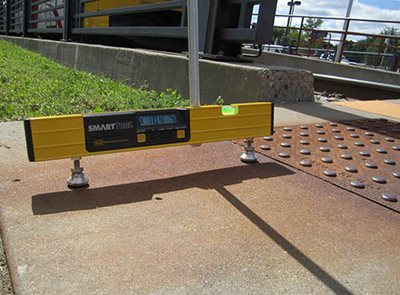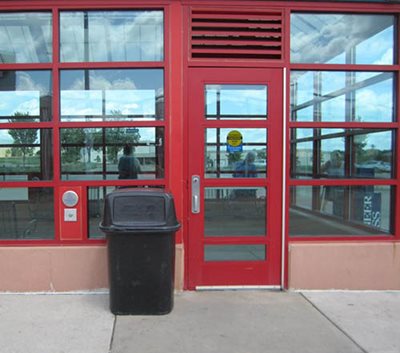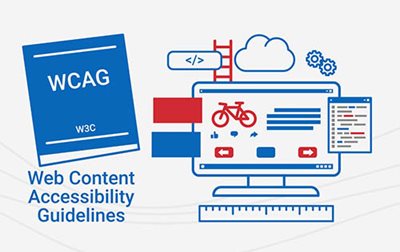The Metropolitan Council is taking initial steps in a far-reaching plan to make our offices, treatment plants, transit facilities, garages, websites, and other digital media more accessible to people with disabilities.
 The actions grow out of a comprehensive evaluation we conducted last year, as well as a follow-up plan we developed in early 2020. “It provides a clear picture of our situation … and where we need to go,” said Guthrie Byard, Americans with Disabilities Act (ADA) & Title VI Administrator.
The actions grow out of a comprehensive evaluation we conducted last year, as well as a follow-up plan we developed in early 2020. “It provides a clear picture of our situation … and where we need to go,” said Guthrie Byard, Americans with Disabilities Act (ADA) & Title VI Administrator.
“This is important work, and for many reasons,” Byard said. “An important one is that we need to fully comply with the federal ADA and other important standards. But beyond that requirement, we want to make our resources fully available, usable, and welcoming to everyone.”
This summer marks the 30th anniversary of the passage of the ADA. President George H.W. Bush signed the act into law on July 26, 1990.
We’re making progress, but there’s still work to be done
One major goal is physical accessibility of Met Council facilities based on ADA requirements. The evaluation identified nearly 3,000 barriers that need to be moved, modified, or eliminated, based on criteria from the U.S. Access Board and Minnesota Accessibility Code.
 Despite the large number, we found that the most serious barriers accounted for about 2% of the total. “The remaining barriers can hamper access to programs or services,” Byard said, “but they affect fewer customers and to a more limited extent.”
Despite the large number, we found that the most serious barriers accounted for about 2% of the total. “The remaining barriers can hamper access to programs or services,” Byard said, “but they affect fewer customers and to a more limited extent.”
“We have made significant progress in making sure our facilities are accessible under the ADA and the Minnesota Building Code,” he said, “but there’s still work to be done.”
Examples include wastewater treatment plant tour routes, placement of automatic door buttons, accessible parking spots, location of accessible parking signs, as well as movable objects in buildings, such as waste bins in entries and hallways.
Evaluation of transit facilities continues
Metro Transit operates and maintains a broad range of facilities that can pose accessibility issues for customers. Bus stops are critical access points for transit riders. “So far, we’ve done evaluations of nearly 300 facility-connected bus stops, and will be looking at doing evaluations of all of our bus stops over the coming years,” said Byard.
While COVID-19 has hampered progress toward ADA compliance, several transit facilities will undergo continuing review and possible improvements, including the Heywood Garage, Transit Centers, park-and-ride lots, pedestrian ramps, and signs. This progress toward compliance will be monitored and goals updated yearly through the use of our ADA Transition Plan.
To manage transit facilities, we developed and maintain a digital database of our assets, such as buildings, equipment, and real estate. Each database entry incorporates a characteristic for accessibility that will help assess conditions and manage improvements.
A significant number of people tour our wastewater treatment facilities at six locations. There, most of the accessibility issues involve building entrances, but some underground corridors have low head clearance, narrow walkways, and tripping hazards underfoot. Public tours are not being conducted currently, so there’s an opportunity to fully review how to improve accessibility, possibly including virtual tours and accessible maps.

Changes will improve our digital accessibility
Byard said that Met Council is moving beyond compliance with the ADA guidelines. An important area is our digital communications, including websites and social media.
We brought two companies on board that specialize in digital accessibility. One assesses how well our websites work for people of all abilities. The other created a plan to enable employees, regardless of ability, to access and master our internal accessibility practices for digital media.
These include accessibility training for employees, improving the visibility and accessibility of document templates, maps, and presentations, as well as a resources and tools to improve our process for purchasing information technology services that are accessible.
Byard said we may explore further action beyond compliance with existing requirements, at least in the future, with the possibility of implementing Universal Design principles.
“The principles are, in essence, accessibility for all, regardless of ability, age, size, or other factors,” he said. “They would be a major action, one that would need extensive thought and careful consideration.”